Creative Activities and Research Initiation Program
Sponsored by the Office of Research and Graduate Studies
Select one of the following if you wish to locate a specific section in this document:
Program ScheduleEvaluation Criteria
Project PeriodReporting Requirements
Proposal SubmissionCommon Mistakes
Introduction
The Office for Research and Graduate Studies (ORGS) solicits proposal for participation in its annual Creative Activities and Research Initiation Program. This is a small grants program designed to afford new faculty members in all disciplines an opportunity to initiate an activity that can be expanded in scope and ultimately funded through an external-sponsoring agency, or further enhance the scholarly development of individuals in the humanities and creative arts that are not well supported through external funding mechanisms. As noted below (Eligibility section), all tenure-track faculty are eligible to apply; however, priority for funding is for tenure-track faculty in the first three years of their appointment. CARIP takes into account both the quantitative and the qualitative scope of research and creative activities that can be found across a variety of scientific disciplines, social sciences, cultural studies, arts, and humanities. Preliminary efforts are often essential for developing future opportunities and for successful negotiations for external funding or for other forms of future project support, such as scholarly recognition of creativity. The purpose of the CARIP is to provide financial assistance to smallprojects that show promise of leading to high quality research programs or creative endeavors. All projects must indicate either: (1) an organization to which a proposal, or creative project, will be submitted, or (2) a well-defined opportunity for future scholarly or creative development.
Eligibility
To be eligible for participation in this program, an individual must have been appointed to the permanent tenure-track faculty of Southeastern Louisiana University. Priority for funding will be for those tenure-track faculty who are in the first three years of their appointment; however, all tenure-track faculty are eligible. A faculty member is not eligible for more than one research initiation project. PreviousCARIP recipients are not eligible. Questions regarding eligibility should be addressed to the Dean for Research and Graduate Studies.
Program Schedule
Proposals may be submitted to the applicant’s academic
dean/director, if the college/unit wishes to review proposals and
suggest revisions. The suggested date for submission to the
college/unit is determined by the unit. However, applicants
should contact their respective deans/directors to determine the
appropriate schedule for the unit. It isstrongly
recommended that proposal budgets be reviewed by the unit budget
office prior to submission to the Office of Research.
Proposals must be submitted to the Office of Research and Graduate Studies no later than 4:30 pm onWednesday, October6, 2010. A peer review panel will submit evaluations of proposals to the Office of Research and Graduate Studies by mid-November. Awards will be announced by the Office of Research and Graduate Studies by late November or early December.
Project Period
Projects should begin on or after January 1st of the year after the award has been made. These projects must be completed by December 31st of the year funding is initiated (12 month calendar year funding). For example, an award made in December 2010 must be initiated and completed in calendar year 2011. A budget will be established in the budget unit of the faculty member.
Budget
Total direct costs of the project should not exceed $10,000 and must be appropriate for the creative activity or research being proposed. These funds are to be used solely in support of the principal investigator’s creative activity or research. Funds cannot be used for memberships, subscriptions, general software, general office supplies/equipment, etc. While travel is recognized as having value to research or creative endeavors of junior faculty, appropriate justification for proposed domestic and international travel should be provided. Faculty salaries are not an allowable cost. Fringe benefits, including graduate student tuition, should be included in Employee Benefits. There is no matching requirement; however, in cases when a proposal cannot be funded in its entirety the faculty member's home department may be contacted to consider providing partialfunding. Funding can be used for small equipment items that are necessary to conduct the research or creative activity. Equipment deemed to be essential for a research project or creative activity must be well-justified and should not be available in thePrincipal Investigator's department or college for sharing or borrowing. Funding from the CARIP is not intended as 'start-up'dollars but for conducting research and/or carrying out creative activities with the potential of leading to further opportunities. The following is a partial list of activities that may be considered for funding:
- Research materials, supplies, or equipment specific to the proposed project (not
general office supplies);
- Materials for traveling exhibitions;
- Rental for studios;
- Travel (state clearly how the areas traveled are unique and why interlibrary loans
or other means of acquiring materials/information are impractical);
- Access to databases and archives to facilitate research or creative activity.
Proposal Submission
Two paper copies of all proposals are required by the Office of Research and Graduate Studies. An electronic copy must also be submitted to Judy Calmes ( judy.calmes@southeastern.edu). Both copies are to be signed by the Principal Investigator, the Department Head, the Assistant Dean or the Dean, usingthe attached Cover Page. Failure to follow guidelines will result in an otherwise worthy proposal being eliminated from competition.
Proposers should check the appropriate box on the cover page indicating whether the proposal should be evaluated as a creative activity or research project. The Research and Creative Activity Council will make final recommendations as to which category a proposal should be evaluated.
Proposal Format
Proposals should be limited to a total of ten (10), double-spaced pages, 12-point font such as Times New Roman, including a brief description of the qualifications of the investigator. Margins must be a minimum of one inch. The Cover Page and Budget Form are not counted as part of the 10 page proposal. Proposals should be written in language such that most faculty, who are not experts in the proposed area of study in a field removed from your own, will be able to understand and evaluate the proposal.
Each proposal should contain the following elements:
-
Cover Page(form attached) - Not included in 10 pages
-
Budget(form attached)- Not included in 10 pages
-
Response to reviews - Not included in 10 pages. For CARIP proposals being resubmitted, a response to reviews must be included and must not exceed one page. This page is not required for first time CARIP submissions.
The combined page count for section #4 should not exceed 10 pages. Reviewers will not consider information included beyond 10 pages for this section.
4. Project Description
Research ProposalsCreative Activities
-State the problem, hypothesis,
available project personnel. -Clearly state the need for the project
|
|
|
|
|
|
|
|
|
|
5. Vita - Not included in 10 pages
- Include a one page vita that list places and dates of educational degrees, employment record, faculty ranks, professional accomplishments, publications, current/previous funding.
Evaluation
All proposals will be peer reviewed. The Creative Activities and Research Councilwill serve as the primary body to review proposals. However, as necessary, discipline or area experts not on the Council will review proposals to ensure thorough and appropriate evaluations. TheOffice for Research and Graduate Studies will select a panel composed of members whose expertise reflects the creative activities, discipline and/or research areas of the submitted proposals. Each proposal will be reviewed by three panel members who will provide an independent review discussing the strengths and concerns of the proposedactivity or project and will rate the proposal as Excellent, Very Good, Good, Fair or Poor. The panel will convene to discuss individual reviews and, as a panel, make one of the following recommendations for funding: High (Fund at Highest Priority), Medium (Fund if money is available), and Low (Not recommending for funding). Reviews and recommendations will be forwarded to the Office for Research and Graduate Studies. Summary reviews will be provided to PIs.
Evaluation Criteria
Research Proposals Creative Activities
|
|
|
|
|
|
|
|
The Dean for Research and Graduate Studies in consultation with the Creative Activities and Research Council will make the final selection of projects to be awarded.
Reporting Requirements
- A final report must be submitted to the Dean for Research and Graduate Studies by January 31st following the project year. It should include the following elements:
a. Description of results of a project or activity.
b. Plans for further work including a timeline for submitting proposals to external-
sponsoring agencies (list specific agencies) or obtaining external (e.g third-party)
support for research or extending the work of a creative activity.
c. Listing of publications and presentations resulting from a research project or
creative endeavor, such as a listing of shows, competitions or the like for creative
works. Publications do not have to be published for reporting purposes;
information on publications in preparation or submitted should be provided.
d. Financial report correlating project or creative activity expenditures with the
proposed budget.
2. There is no page limit; however, reports should be concise when summarizing
results and activities.
General Timeline
| Proposal Announcement |
August 2010 |
| Optional Submission to Colleges/Units (if college/Unit wishes to provide assistance with revisions) | Determined by college/unit |
| Proposal Submitted to Deanfor Research and Graduate Studies | October 6, 2010 |
| Review Proposals by Panel Completed | Mid November |
| Awards Announced |
Late November/ Early December |
Common Mistakes
The following is a list of common mistakes found in grant proposals, in general, and specifically in CARIP proposals.
- The proposal has typographical errors, misspelled words, and/or grammatical errors.
- Using etc, after listings which is too open ended, vague and not specific.
- A proposal is too broad for the funds requested and/or time allowed.
- A hypothesis, research question, or scholarly purpose of an activity, is not clearly stated; therefore, the reviewers do not grasp the significance of the problem to be investigated or the creative endeavor to be pursued.
- The goal or anticipated outcome of the project or activity is not defined, or is vague.
- The project or activity description is too technical, not allowing for adequate understanding by non-discipline reviewers.
- The project or activity description, design and plan is poorly organized.
- For research projects, the experimental design and statistical analysis is flawed.
- Budget calculations are incorrect or appear inflated.
- "Southeastern" should be spelled out in all instances, the abbreviations SLU or SELU should not be used.
The single most important activity that improves the competitiveness of a proposal is to have the proposal reviewed (by someone other than the PI).
- Have someone in the discipline review the proposal.
- Have someone unfamiliar with discipline or proposed work review the proposal.






